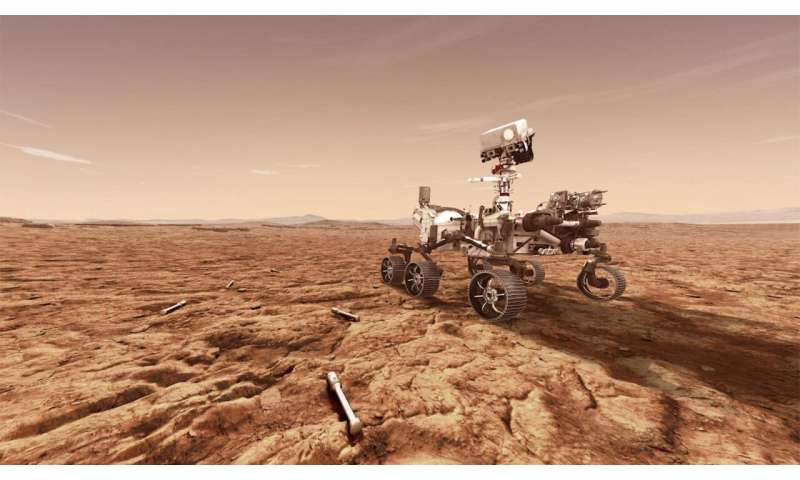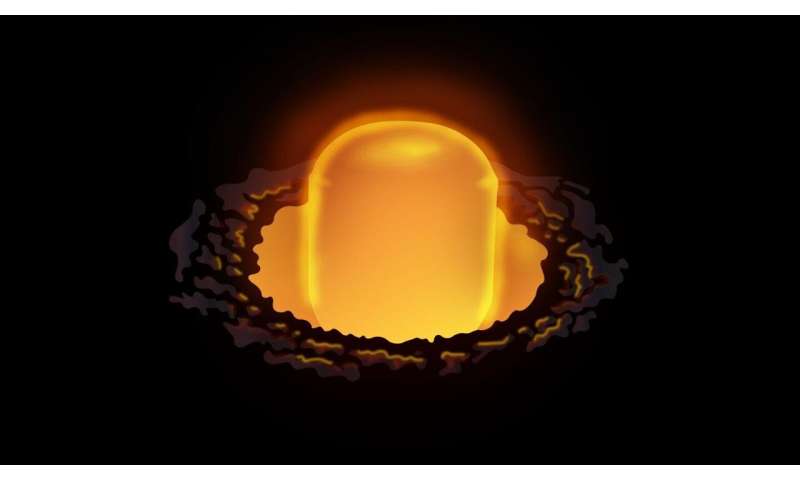#Plutonium-238 to help power Perseverance on Mars
“#Plutonium-238 to help power Perseverance on Mars”

After its long journey to Mars beginning this summer, NASA’s Perseverance rover will be powered across the planet’s surface in part by plutonium produced at the Department of Energy’s Oak Ridge National Laboratory.
“Mars 2020 will be the first NASA mission that uses ORNL-produced plutonium-238,” said Alan Icenhour, associate laboratory director for nuclear science and engineering at ORNL. “This accomplishment represents countless hours of work by dedicated ORNL staff, and it’s rewarding to see this work come to fruition. Helping NASA in its mission to Mars is a significant moment in the history of the lab.”
Like other rovers on deep-space missions, Perseverance’s traveling power on Mars comes from thermoelectric generators that create electricity from heat generated from the decay of plutonium-238 in the form of oxide ceramic pellets. Pu-238 produces heat as it decays, and the rover’s multi-mission radioisotope thermoelectric generator converts that heat into electricity to charge the lithium-ion batteries that move the rover and power the instruments it will use on the surface of the Red Planet.
Pu-238 is ideal for deep-space travel because of its long half-life of nearly 88 years, but it has been in short supply. Previously, the U.S. stockpile consisted primarily of Pu-238 produced at the Savannah River nuclear plant in the late 1980s, which has since been decaying away. But U.S. production of Pu-238 ended more than 30 years ago.

That’s why 2015 was a milestone for ORNL: the first new stateside production of Pu-238 in nearly three decades. Since that initial success, the lab has been consistently increasing its Pu-238 production capabilities, aiming to produce 1.5 kilograms per year by 2026.
“We have a 50-year history of irradiating targets and producing radioisotopes,” said ORNL’s Robert Wham, Pu-238 Supply Program manager. “Having the resources we have right here makes ORNL well suited to produce the nation’s supply of Pu-238. We have a lot of scientists and engineers all across the lab involved with this effort, and it’s very exciting to them to be contributing to space exploration.”
It’s not an easy process, and ORNL, DOE’s Office of Nuclear Energy and NASA have invested time, money, research and bright minds into improving it. ORNL receives neptunium-237 feedstock from Idaho National Laboratory, which stores the nation’s inventory. Once at ORNL, the neptunium oxide is mixed with aluminum and pressed into pellets. Next, the pellets are put into tubes and irradiated in ORNL’s High Flux Isotope Reactor, which causes the neptunium to transmute into Pu-238.
The pellets are moved to shielded hot cells in ORNL’s Radiochemical Engineering Development Center. There, the Pu-238 is separated from the neptunium through a series of chemical processes, converted to an oxide powder, and then shipped to Los Alamos National Laboratory for fabrication into ceramic pellets for the thermoelectric generator. Leftover neptunium is recycled to make more Pu-238.
HFIR can irradiate up to 6,800 grams of neptunium per year in batches that stay in the reactor for two to three months. INL’s Advanced Test Reactor is also irradiating small quantities of neptunium on a limited basis and is slated for a makeover next year that will increase its capability to produce Pu-238 as well.
The program has installed automated systems to press and measure the Np-237 target pellets. Wham said automating the entire process has allowed the lab to increase the production of pellets significantly, helping to more than triple the output of Pu-238. Researchers are looking at ways to use monitoring on the line to test and evaluate chemical processing steps in the hot cells, saving time and materials involved with taking samples out of the hot cells for analysis.
Additionally, new equipment is being made to improve fabrication of the targets that are irradiated in HFIR. ORNL is staffing operations so that the process can continue 24 hours a day.
Some of ORNL’s Pu-238 was combined with Los Alamos’s existing supply for the Mars 2020 mission. ORNL has contributed additional elements to Perseverance, including producing the rover’s iridium alloy clad vent sets, which are virtually indestructible metal cups that contain the Pu-238 fuel, and the carbon-bonded carbon fiber insulation that surrounds the fuel cladding.
Citation:
Plutonium-238 to help power Perseverance on Mars (2020, July 29)
retrieved 29 July 2020
from https://phys.org/news/2020-07-plutonium-power-perseverance-mars.html
This document is subject to copyright. Apart from any fair dealing for the purpose of private study or research, no
part may be reproduced without the written permission. The content is provided for information purposes only.
If you want to read more Like this articles, you can visit our Science category.
if you want to watch Movies or Tv Shows go to Dizi.BuradaBiliyorum.Com for forums sites go to Forum.BuradaBiliyorum.Com



